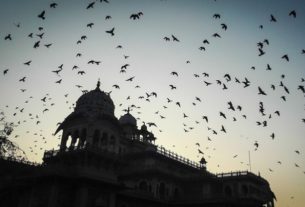New Year’s Day, the first day of a brand new year – January 1 according to the modern Gregorian calendar and the Julian calendar – , is celebrated with a variety of cultural, social and religious observances around the world. In most cultures, the occasion is observed with a variety of ceremonies and rites that symbolically represent the casting off of the old year and expressing joy in the arrival of a fresh new year.
New Year’s Day is probably the most celebrated public holiday across the world, and fireworks, parades, wishing friends and family and making New Year resolutions, are some of the most common traditions associated with New Year and New Year’s Eve. The very concept of celebrating the arrival of a new year can be traced back to ancient Mesopotamia and Rome. Back in those days, it was not January 1, which was observed as the start of a new year, still the concept of welcoming a fresh year with festivities was observed throughout the history of mankind.
A showcase of cool New Year traditions from all corners of the world
1. The Times Square New Year’s Eve ball drop
In New York City on the occasion of New Year’s Eve, the Times Square Ball, located on the roof of the New York Times Building, is lowered down a specially designed flagpole, starting at 11:59:00 p.m (Eastern Time Zone), with a countdown from sixty seconds until one second. The ball descends 141 feet in sixty seconds and reaches the bottom of the flagpole with the arrival of New Year. This event is accompanied by other festivities like live music performances and fireworks. The ball drop was first held on December 31, 1907 to welcome 1908.
2. The Polar Bear Plunge
In countries like Canada, Netherlands, the US and the UK, an event, which is often referred to as the polar bear plunge or polar bear swim is conducted on the occasion of New Year. People get together on beaches and run into the icy waters to take a swim, while welcoming a brand new year.
3. Eating Grapes on New Year’s Eve
In Spain, people keep 12 grapes within their reach while waiting for the new year to arrive on the New Year’s Eve. When the clock strikes 12 at midnight, one grape is stuffed into the mouth on each stroke of the clock, and if all grapes are eaten within the period of the strikes, it is believed that the fresh year will be full of good luck.
4. Good Luck Coins
In Greece and Cyprus, families and friends gather together on New Year’s Eve. At midnight the lights are switched off and a specially prepared pie having a coin is cut to celebrate the occasion. Whoever wins the piece of pie with the coin is believed to have good luck for the whole year. Similarly in Bolivia, coins are stuffed into sweets on the occasion of New Year festivities and those finding the coins are considered lucky.
5. Burning Effigies
In Panama, effigies of famous are burned in order to bring good luck on New Year. In Ecuador too, effigies and sculptures of celebrities and pop culture figures made of Papier-mâché are sold on streets, which are then burned before the stroke of midnight on New Year’s Eve.
6. Hogmanay and first-footing
In Scotland, the New Year’s Eve is celebrated in a unique manner and this occasion is referred to as Hogmanay. It is a tradition that the first person to step inside a home – a custom called first-footing – after midnight on New Year’s Eve will determine the luck of the house owner for the whole new year. The occasion of Hogmanay is celebrated with fireworks, swinging of burning fireballs and parades.
7. Dropping a Dollop of Ice Cream
In Switzerland, it is believed that dropping a scoop of ice cream on the floor on the occasion of New Year, will bring in an year of abundance and good fortune.
8. Blessing the Cows
In rural Belgium, the farmers bless their livestock with happy new year wishes, which is believed to bring a year of prosperity, well-being and excellent health.
We wish everyone a very warm, cosy and brilliant 2020!
Have you come across any such awe-inspiring new year traditions? Then share them with the readers of pravasidaily.com by writing a quick comment below.





